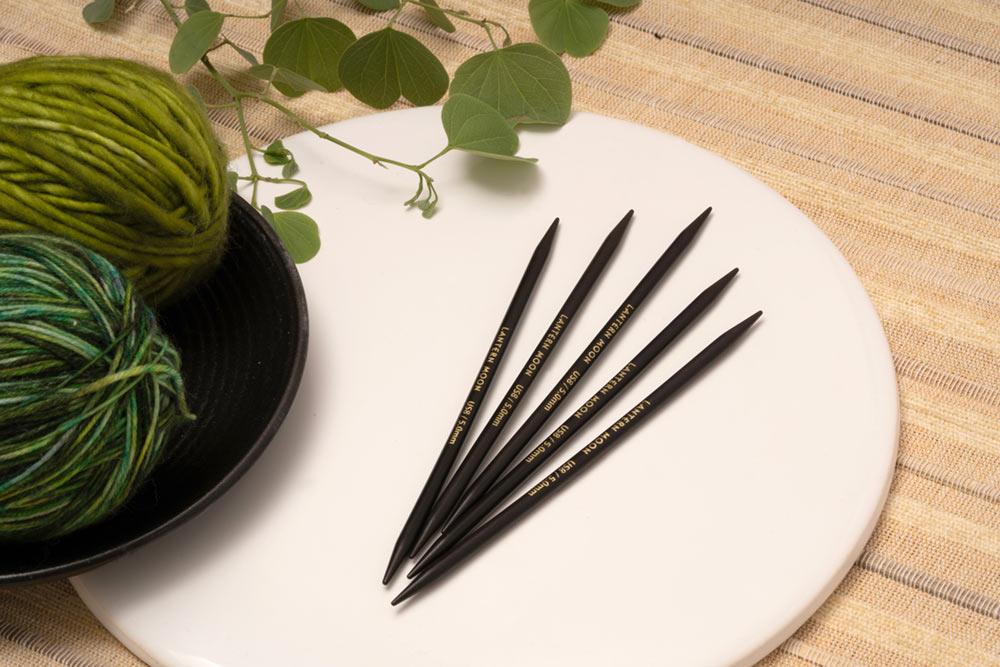
Knitting a pair of socks for yourself or your loved ones is so much fun! With yarn and any of your knitting needles (single-pointed, circular and double-pointed) you can knit socks. But, socks being a tubular project, it’s best that you knit in the round. Now, the options you have are double-pointed knitting needles or circular needles of the right length. For your project, there are thousands of great patterns on the web for hand-knitted socks but you can also go ahead without a pattern by designing your own.
Many knitters, especially beginners think knitting on double-pointed knitting needles is overwhelming, but that is not the case. Though a little challenging at first it is actually quite easy once you get around managing the needles. Experienced knitters prefer the double point for knitting any circular circumference. And, why not, DPNs have been the oldest tools for knitting in the round for centuries. In comparison to sock knitting on circular needles, double-pointed needles have more freedom to cast a small number of stitches. There will be no worrying about getting the exact needle length or overstretching the fabric to accommodate the stitches on the cord. Besides, socks you can knit the smallest circumference such as baby mittens, hats, etc. to large diameters such as sleeves and necklines.
Knitting Socks on Double-Pointed Needles
Basically, knitting socks on DPNs all you need to know is knitting with double pointed needles. The method is very similar to working with any knitting needle - you cast on stitches, then join the needles and when you knit the stitches from one needle to another at a time, while the other needles of the arrangement hang on the fabric. With consecutive rounds of knitting, you’ll see the project shaping up.
Before getting started with knitting Socks on Double Pointed Knitting Needles, take a look at helpful tips on how to knit in the round with double-pointed knitting needles
1. Cast on your stitches on one needle, then divide them
To avoid a lot of needless poking and fumbling, always cast-on stitches on one needle and then divide them evenly over the other two or three needles you’ll be using. This way you will have a uniform tension when knitting your first round. Make sure to transfer stitches without dropping them. For example, if you need to cast 30 stitches, divide 10 stitches over 3 needles, or if you need to work with 4 needles then divide them as follows 8, 7, 7 & 8.
2. Make sure the loops are not twisted
Before you start knitting make sure the loops are in the same direction (facing each other). Twist them to the inner diameter and give a tight tug to the yarn.

3. Avoid ladders in between the needles
Ladders are space in your knitted fabric. While you knit, especially when switching from one needle to the next, the first and the last stitch on your needle might look a bit wonky and create a visible ladder. In order to avoid laddering at the needle intersections, make sure the tip of the needle you are knitting with is placed over the next needle to avoid any open spaces. And, if you are purling your stitches your working needle tip should be under the left-hand needle to avoid enlarged stitches. If you cannot avoid the small ladders, blocking your item will help adjust all stitches evenly.
For the beginning of a round avoid the gap by rearranging the stitches on your needle arrangement and placing a stitch marker to mark the start of the round.
4. Create a gauge swatch
Knitting in the round. especially with double-point needles will alter the appearance of your stitches. Even if you have knitted with the same wool and needle size before it’s always recommended to make a round gauge swatch. Knit at least ten rounds, then bind off and block your swatch before you measure it. Many sock yarns shrink slightly when washed. With the gauge swatch, you can get the right calculation of the row and stitch count, and understand how the yarn behaves and if you need to change your knitting tension.
With these four points in mind, you are ready to cast on your socks. Please bear in mind that you might make mistakes in knitting your socks but the key is to enjoy. The smooth ebony wood double-point needles of the Lantern Moon collection allow a smooth flow of stitches along with the right amount of grab on the yarn. The fine tips
You can also knit socks on circular knitting needles or try the magic loop or even get experimental with making socks with crochet hooks. Follow our blog for tricks, techniques, tips and more on knitting and crochet.
